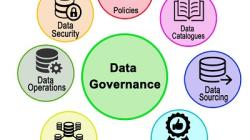Watch the new video by Gary Cokins, Analytics Thought Leader and Author, to learn the eight forces of Data-Driven FP&A.
In this series of blogs, I’m looking at several areas that FP&A departments must address to add value to the organisations they serve in this technology-driven age. In this blog, I look at the changing nature of databases.
This article looks at the importance of data governance and data literacy. It also explores how, as finance professionals, we can help to improve these domains within our businesses and what the benefits are to be gained.
FP&A Trends examined the latest trends and developments in FP&A in its latest webinar, sharing invaluable findings from the 6th Annual FP&A Trends Survey and considering how FP&A departments can operate and thrive in the “brave new world” of business.
This article provides an overview of the topics and cases presented and discussed by experts and the results of interactive polls.
This paper covers the findings of our sixth annual FP&A Trends Survey, where we share the trends and challenges facing FP&A departments around the world. The survey was performed at a time where organisations were looking to recover from the pandemic when many were trying to figure out how to operate in a changed business world.
This FP&A Trends webinar covered the findings of our 6th annual FP&A Trends Survey, where we tried to discover the latest trends and challenges facing FP&A departments around the world.
Pagination
Subscribe to
FP&A Trends Digest

We will regularly update you on the latest trends and developments in FP&A. Take the opportunity to have articles written by finance thought leaders delivered directly to your inbox; watch compelling webinars; connect with like-minded professionals; and become a part of our global community.






